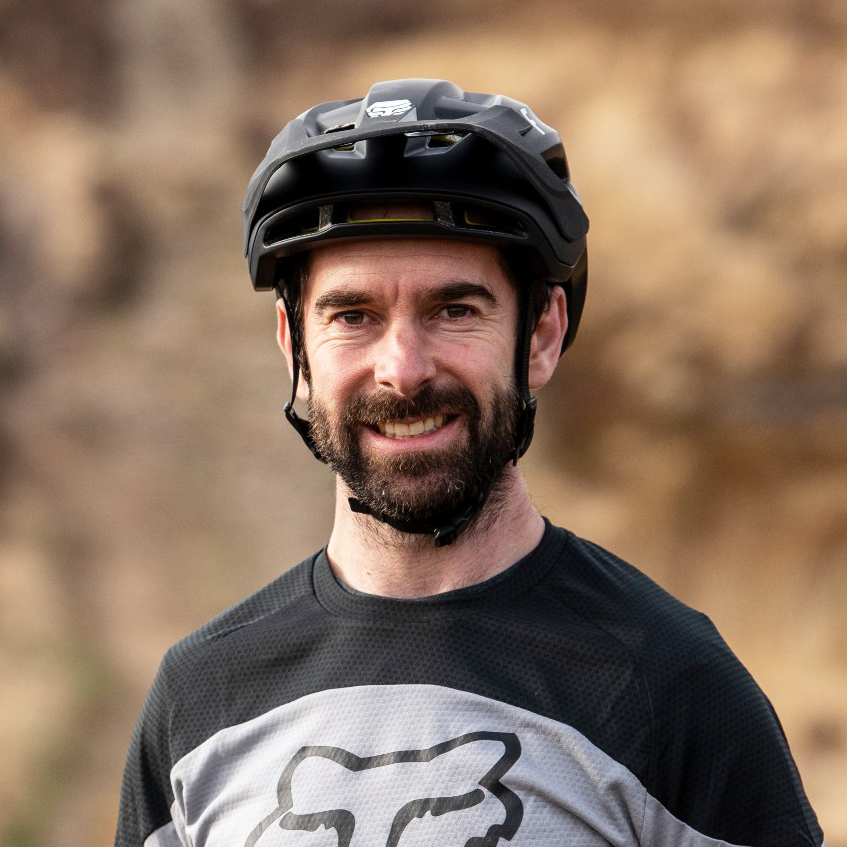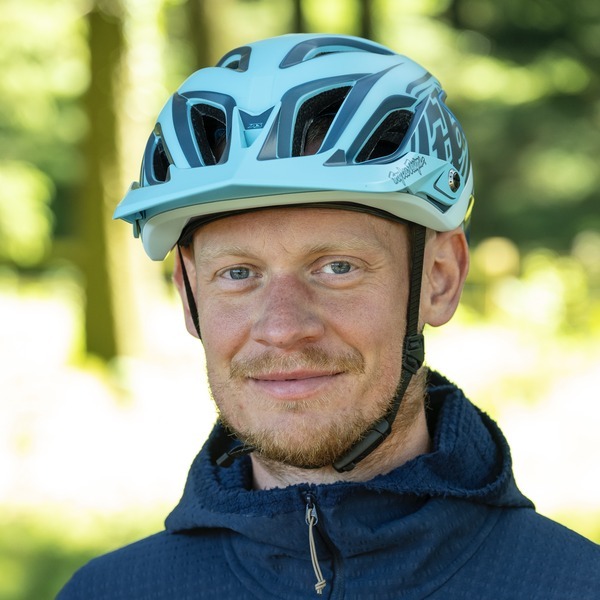From the humble beginnings of the single pivot, mountain bike suspension designs have moved on in technological leaps and bounds.
The number of pivot points has multiplied to give engineers the ability to tune kinematics to within an inch of perfection, and increasingly complex layouts are now the norm rather than the exception.
But where is there still room for improvement? Our tech team got together to give their opinions and explain where and how things could get better.
Rob Weaver: rear-suspension designs have come a long way, but can they go any further?

I think it’s fair to say rear-suspension design has started to plateau. In the short time mountain biking has existed, bikes have come a long way, and that progress is clearly evident when looking at full-suspension bikes.
Single pivots, virtual pivots, linkage-actuated single pivots, four- and six-bar linkages… the list goes on.
Even when brands have settled on a layout, there’s still room for them to add their own spin on things, such as Yeti's Switch Infinity System, which enables the main pivot to shift position as the bike cycles through its travel.
But where will designers go next? You only need to look at a six-bar linkage or a high-pivot system that employs a second chain to see that things have got pretty complex.
Complexity tends to add cost for everyone involved – even if the results are impressive.
In the near-future, I think the biggest performance gains in rear suspension will come from two areas.

The first is electronically controlled suspension.
You can create a suspension design that’s heavily focused on going downhill, but relies on the rider to flick a lever on the shock to ensure it can be ridden uphill without blowing a gasket.
Even if that downhill performance is out of this world, riders will still complain on the climbs, either forgetting to flick the switch or accidentally leaving it engaged at the top of the hill.
But, if the shock firms up for you, removing the thinking and effort before opening back up and unleashing that incredible downhill capability once you’re on top of the mountain, that’s got to be a win, right?

The electronics already exist. We’ve seen them across myriad race bikes, from cross-country to downhill, over the last few years and my guess – especially as electric mountain bikes grow in popularity – is that we’ll see more of them over time, on even more bikes.
This could help designers push things further.
The next area is gearboxes. With four elite World Cup downhill teams now using these, I’ve a feeling we’ll see more elsewhere soon enough. Yes, there are limitations due to drag and shifting, but the more brands get on board with these, the faster they will improve.
I doubt we’ll see Shimano or SRAM enter the gearbox game just yet, but they’d be crazy to ignore the potential here.

If you’ve ridden an eMTB, you’ll know just how good suspension can perform when you tinker with the sprung-to-unsprung ratio of the bike. Adding weight low-down and central on the bike helps to make it more stable.
Removing the derailleur and cassette from the swingarm (unsprung mass) will help improve suspension sensitivity, which in turn, will boost traction. It’s a win-win when it comes to suspension performance.
Neither of these things seems a million miles from making it through to the masses and boosting suspension performance across the board.
It’s going to be really interesting to see how the next couple of years play out, but one thing is for sure, bikes will continue getting better, which is great for all of us.
Tom Marvin: the weird and wacky haven’t stuck around – but they’re fun to try

For as long as suspension forks have been around, the two-legged telescopic fork has ruled supreme.
Hydraulic damping overtook elastomers, but for me, this is the most seismic change in suspension tech we’re likely to see – for a while at least.
That’s not to say brands haven’t tried to shake things up in the past, though.
The most notable, and perhaps obvious, is the linkage fork. While not the first, the one I usually hark back to was Whyte’s PRST-1 bike, which utilised a 6-bar system, designed to prevent brake dive while remaining active at all times.

A rear shock provided the damping control – something most other linkage forks have used.
However, it was, by most accounts, flexy and suffered from stiction. The introduction of the Fox Forx was said to be its death knell – a stiffer, smoother and well-controlled telescopic fork did the job better.
Other notable, but short-lived linkage forks include USE’s Sub – a single-sided fork upside-down with a linkage onto which the brake caliper was mounted, again to prevent brake dive.
And in more recent times, there’s been the Trust Message fork, designed with suspension visionary Dave Weagle, and the Motion Ride E18. Both were claimed to provide a smoother ride, less impeded by rider weight shifts and braking forces.

Lauf’s Trail Racer took the linkage tech in another direction, with a super-light, stiction-free (and damping-free) build. However, it was in the world of gravel riding where Lauf’s trail-buzz killing tech found its home.
The upside-down fork has had slightly more success over the years.
With oil following gravity to keep the seals lubed, they’ve been known as smooth operators.
However, with one fewer brace between the fork legs, they’ve either been flexy, or needed to be incredibly over-built in order to ensure that steering inputs turn the wheel at roughly the same time as the bar.
Manitou’s Dorado DH fork can still be seen at World Cup DH races though, with Reece Wilson’s AON Racing Team equipped with it in 2025.

It would be remiss of me to omit Cannondale’s Lefty fork – although its model range is much slimmer than it was (and is largely removed from US product lines).
While the larger suspension manufacturers have steered away from linkage forks, the likes of RockShox, Marzocchi and Manitou have experimented with upside-down units, but ultimately they’ve never really taken off.
I still lust after a pair of Marzocchi Shiver SCs, though…
Finally, I’ll point towards electronic forks.
While hydraulic damping might have been the last truly seismic change to fork tech, I’m sure suspension industry big-wigs will believe that electronics will be the next.
It’s all been done before, though.

Cannondale was the first to play around with electronics, integrating the ELO lockout into the Lefty in 2001.
Fox, RockShox and Magura were all playing about with it too, in the early 2010s.
It didn't take too long from there for RockShox and Lapierre to build ‘e.i’ suspension – fork and crank sensors that detected bumps and pedal forces to open or close the rear shock.
So where has this all led? Well, RockShox’s Flight Attendant and Fox’s Live Valve are now established technologies, but still very much at the high-end of performance.
Will this be the next truly seismic change in suspension tech? I’m not sure, yet.
Alex Evans: electronics are here to stay and there’s so much room for improvement

Unlike Tom, I’m a firm believer that electronics are the cure-all panacea for our suspension woes.
With electronic damper control, riders won’t have to choose between downhill plushness and pedalling efficiency; they’ll be fully entitled to have both, all the time.
We’re already seeing an emergence of this with Flight Attendant and Live Wire Neo.
I tested YT’s previous-generation Capra, fitted with RockShox’s first go-around at Flight Attendant on a long-travel ZEB fork and Super Deluxe rear shock.
The results were impressive.

The electronics help push the bike’s performance potential ouside the confines of its descent-focused winch-and-plummet box into a more adaptable all-rounder.
In a time where specificity reigns supreme – bikes with marginally different travel figures are marketed for every niche of our sport – having a single model that can span the disciplines is incredibly appealing.
But the current iterations of Flight Attendant and Live Wire Neo are the horse and cart to our modern-day electric cars.
Yeah, they’ve got plenty of sensors, including accelerometers, crank rotation and lean angle, but the scope of their intelligence means they’re reactive rather than proactive.
As my colleagues attest, the systems are great but imagine how much better they’d be if they could read the trail ahead.
If they could proactively tune the damper for incoming impacts rather than a split second after you’ve hit something, it would be like stepping into the next dimension.

Sensors such as LiDAR, or cameras, could combine with GPS to map out the terrain ahead of you, proactively opening and closing your damper.
If it knew the smooth climb you were riding was about to turn nasty with a load of sharp rocks, it could preemptively open the damper’s circuits to cushion the first impact rather than reacting to it.
Likewise, if the choppy, wild descent you were hurtling down was about to turn tame and smooth with a load of pedalling, as soon as the system knew you’d got past the last bump, it could close the dampers to improve efficiency.
And, say, there was a rogue rock, root, bump, hole or compression you hadn't spotted, but the system had, it could do its best to mitigate any destabilising effects by making your suspension as plush as possible.
The electronics of today are exciting, but it’s the future that gets me really revved up.


